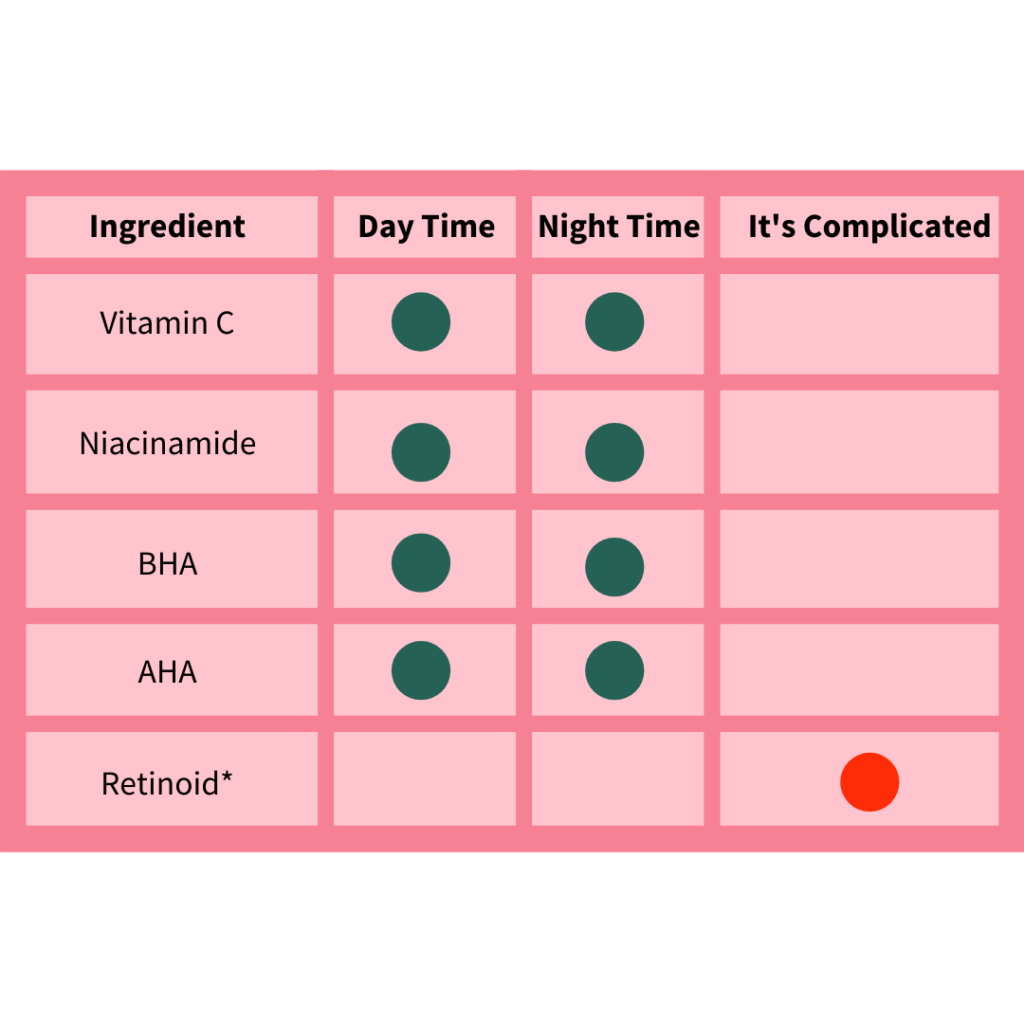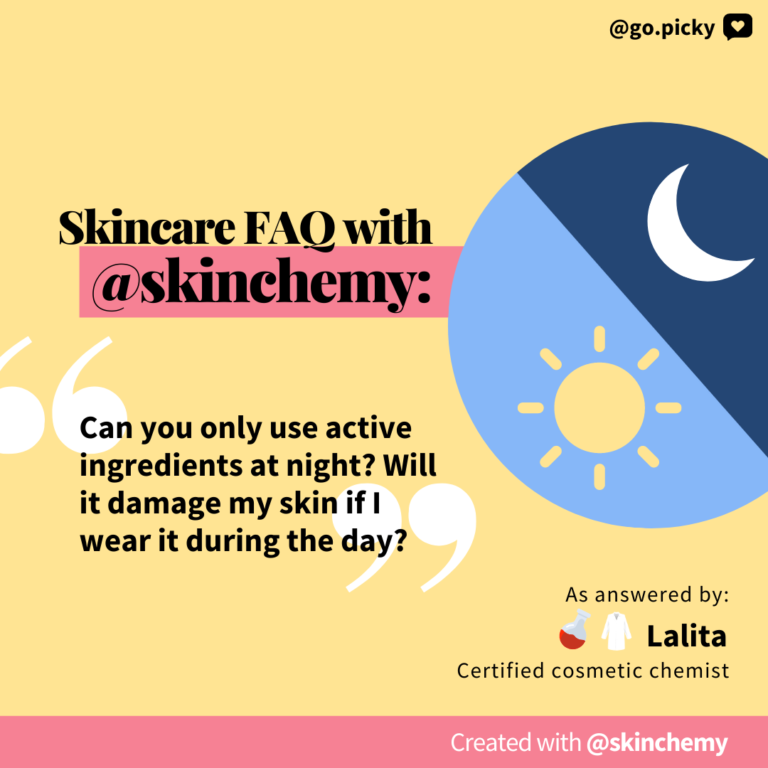Q. Can I only use active ingredients at night? Will it damage my skin if I wear active ingredients during the day?
A. You can use most active ingredients day and night, but you still should be careful!
Using active ingredients can immensely benefit your skin, but how to use them correctly can be a bit tricky. One thing that can greatly impact these ingredients’ effectiveness is what time of the day you use them! So, I’m here to help you navigate through the difference and give you some tips on how to bring out the best of these products, while keeping your skin safe. I’ll also throw in a few recommendations so you can give these active ingredients a try!
List of Active Ingredients
First, let’s briefly review the variety of active ingredients out there and how they affect the skin.

- Vitamin C helps restore skin cell turnover rate and give brightness to dull skin.
- Niacinamide has anti-inflammatory properties that soothe the skin and strengthen your skin barrier to better retain moisture.
- Beta Hydroxy Acids (eg. Salicylic Acid) remove dead skin cells, have antibacterial properties and control sebum production.
- Alpha Hydroxy Acids (Glycolic, Lactic, and Mandelic Acid) work as exfoliators to remove dead skin cells and can keep dull and flakey skin at bay.
- Retinoids help to increase our skin cell turnover rate and to basically renew our skin cells. Used in many anti-aging products.
Retinoids: Photostable vs. Non-photostable
Retinoids can be a challenge. This is because some retinoids are photostable, while others are not. But, what does it mean to be photostable or non-photostable?
Photostable retinoids do not break down when exposed to UV light, which means that they can be used outside during the day without irritating your skin. Some examples of photostable retinoids are micronized Tretinoin and Adapalene.
As for non-photostable Retinoids, such as Retinol, using it during the day may agitate your skin or create irritation. So, it should only be used at night. However, when in doubt, always consult a dermatologist to find what works best for your skin type!
Day Time Vs. Night Time
The most important thing to do if you’re using active ingredients during the day is to wear sunscreen!
Most active ingredients, excluding non-photostable ones, can be used during the day with sunscreen. Vitamin C, Niacinamide, Alpha Hydroxy Acids and Beta Hydroxy Acids are all fine for daytime and nighttime use. As for nighttime use, you can use all the abovementioned active ingredients, including non-photostable Retinoids.
Vitamin C, especially L-Ascorbic Acid, is effective for fighting free radicals when used right before going out into the sun. But, that doesn’t mean it can’t be used at night. Niacinamide is great for reducing redness, pore size and improving overall skin tone, and it can be used both during the day and at night.
Alpha Hydroxy Acids and Beta Hydroxy Acids can be used during the day and/or night. There’s really no right way or order to use these acids, just as long as you’re using it before sunscreen. A good way to use acids is applying them after cleansing and toner or after a light moisturizer.
Ready to try out some of these amazing ingredients and watch your skin shine? Use the Mega Ingredient filter on the Picky app to find recommended products with these active ingredients! Click here to go to the Picky website, or here to go back to our blog.


















